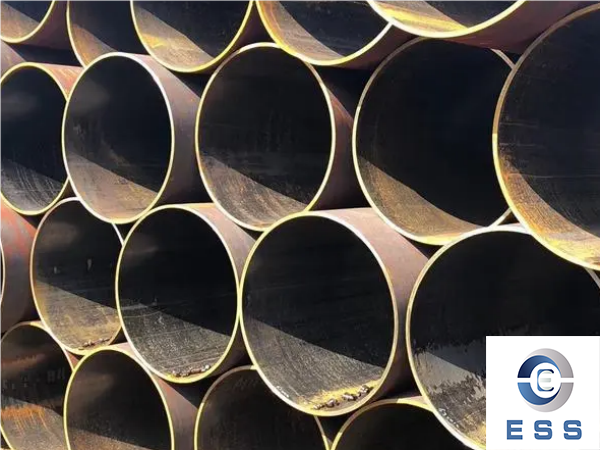What is a large diameter steel pipe?
Large-diameter coated steel pipes are coated with plastic on the basis of large-diameter spiral welded pipes and high-frequency welded pipes. The maximum pipe diameter is 1200mm. It can be coated with polyvinyl chloride (PVC), polyethylene (PE), etc. according to different needs. Epoxy resin (EPOZY) and other plastic coatings with different properties have good adhesion, strong corrosion resistance, can withstand strong acid, strong alkali and other chemical corrosion, are non-toxic, non-corrosive, wear-resistant, impact-resistant and penetration-resistant It has strong properties, the pipe surface is smooth, and does not adhere to any substance. It can reduce the resistance during transportation, improve the flow rate and transportation efficiency, and reduce the transportation pressure loss.

There is no solvent in the coating and no exuding substances, so it will not pollute the transported medium, thereby ensuring the purity and hygiene of the fluid. It can be used alternately in hot and cold cycles in the range of -40°C to +80°C, and does not age. It does not crack, so it can be used in harsh environments such as cold areas. Large-diameter coated steel pipes are widely used in tap water, natural gas, petroleum, chemical industry, medicine, communications, electric power, ocean and other engineering fields.
Steel pipe weight formula
[(Outer diameter-wall thickness)*wall thickness]*0.02466=kg/meter (weight per meter)
Pipe diameter expression
The expression of large-diameter steel pipe diameter should comply with the following regulations:
1. For pipes such as water and gas transportation steel pipes (galvanized or non-galvanized), cast iron pipes, etc., the pipe diameter should be expressed in nominal diameter DN;
2. For pipes such as seamless steel pipes, welded steel pipes (straight seam or spiral seam), copper pipes, stainless steel pipes, etc., the pipe diameter should be expressed as outer diameter × wall thickness;
3. For pipes such as reinforced concrete (or concrete) pipes, clay pipes, acid-resistant ceramic pipes, cylinder tile pipes, etc., the pipe diameter should be expressed by the inner diameter d;
4. For plastic pipes, the pipe diameter should be expressed according to product standards;
5. When the design uses the nominal diameter DN to express the pipe diameter, there should be a comparison table between the nominal diameter DN and the corresponding product specifications.
The specifications of rigid polyvinyl chloride pipes for building drainage are expressed by de (nominal outer diameter) × e (nominal wall thickness) (GB 5836.1-92)
The specifications of polypropylene (PP) pipes for water supply are represented by de × e (nominal outer diameter × wall thickness)
Delivery length regulations
1. Ordinary length (also called non-fixed length): Any length within the length range specified by the standard and without a fixed length requirement is called ordinary length. For example, structural pipe standards stipulate: hot rolled (extruded, expanded) steel pipes 3000mm ~ 12000mm; cold drawn (rolled) steel pipes 2000mm ~ 10500mm.
2. Fixed length: The fixed length should be within the usual length range and is a fixed length required in the contract. However, it is impossible to cut an absolute fixed length in actual operations, so the standard stipulates the allowable positive deviation value for the fixed length.
3. Double ruler length: The double ruler length should be within the usual length range. The single ruler length and the multiples of the total length should be specified in the contract (for example, 3000mm × 3, which is 3 multiples of 3000mm, and the total length is 9000mm). In actual operation, an allowable positive deviation of 20 mm should be added to the total length, and a notch allowance should be left for each single ruler length. If there are no provisions for length deviation and cutting allowance in the standard, it should be negotiated between the supplier and the buyer and stated in the contract. The double-length scale, like the fixed-length length, will significantly reduce the finished product rate of the manufacturer. Therefore, it is reasonable for the manufacturer to propose a price increase. The price increase range is basically the same as the fixed-length length.
4. Range length: The range length is within the usual length range. When the user requires a fixed range length, it must be specified in the contract.













 Eastern Steel Manufacturing Co.,Ltd not only improve product production and sales services, but also provide additional value-added services. As long as you need, we can complete your specific needs together.
Eastern Steel Manufacturing Co.,Ltd not only improve product production and sales services, but also provide additional value-added services. As long as you need, we can complete your specific needs together.










